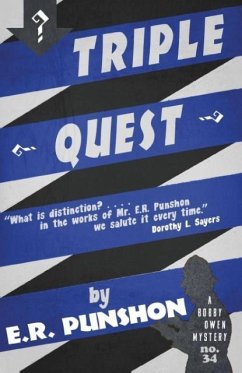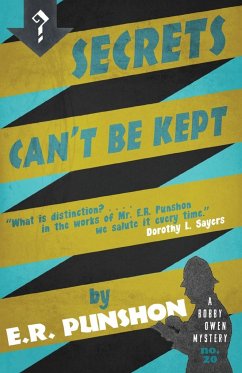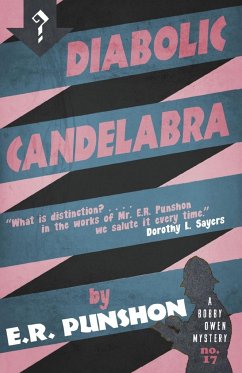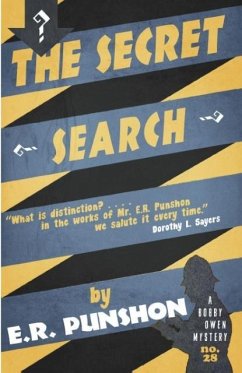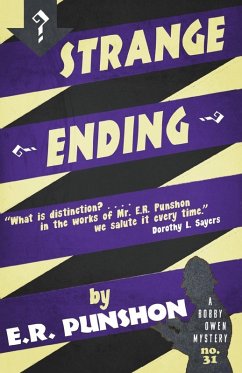
There's a Reason for Everything
A Bobby Owen Mystery
Versandkostenfrei!
Versandfertig in 1-2 Wochen
13,99 €
inkl. MwSt.

PAYBACK Punkte
7 °P sammeln!
With a slow gesture of one lifted hand, Bobby pointed. There, in a space between the prostrate stag and posturing goddess, was a human leg, a twisted, motionless leg in a strained, unnatural position. Bobby Owen, now Deputy Chief Constable of Wychshire, finds himself taking part in a ghost hunt at legendary haunted mansion Nonpareil. What he discovers is the very real corpse of a paranormal investigator. It seems that among the phantoms there are fakes - but will that end up including a priceless painting by Vermeer? There's a Reason for Everything was first published in 1945, the twenty-first...
With a slow gesture of one lifted hand, Bobby pointed. There, in a space between the prostrate stag and posturing goddess, was a human leg, a twisted, motionless leg in a strained, unnatural position. Bobby Owen, now Deputy Chief Constable of Wychshire, finds himself taking part in a ghost hunt at legendary haunted mansion Nonpareil. What he discovers is the very real corpse of a paranormal investigator. It seems that among the phantoms there are fakes - but will that end up including a priceless painting by Vermeer? There's a Reason for Everything was first published in 1945, the twenty-first of the Bobby Owen mysteries, a series eventually including thirty-five novels. This edition features a new introduction by crime fiction historian Curtis Evans. "What is distinction? … in the works of Mr. E.R. Punshon we salute it every time." Dorothy L. Sayers "No fictional policeman deserves professional advancement more than solid, intelligent Bobby Owen. It's gratifying to learn he's now deputy chief constable of Wychshire and equally gratifying to know that his promotion doesn't keep him from investigating such absorbing problems as this. …" San Francisco Chronicle





